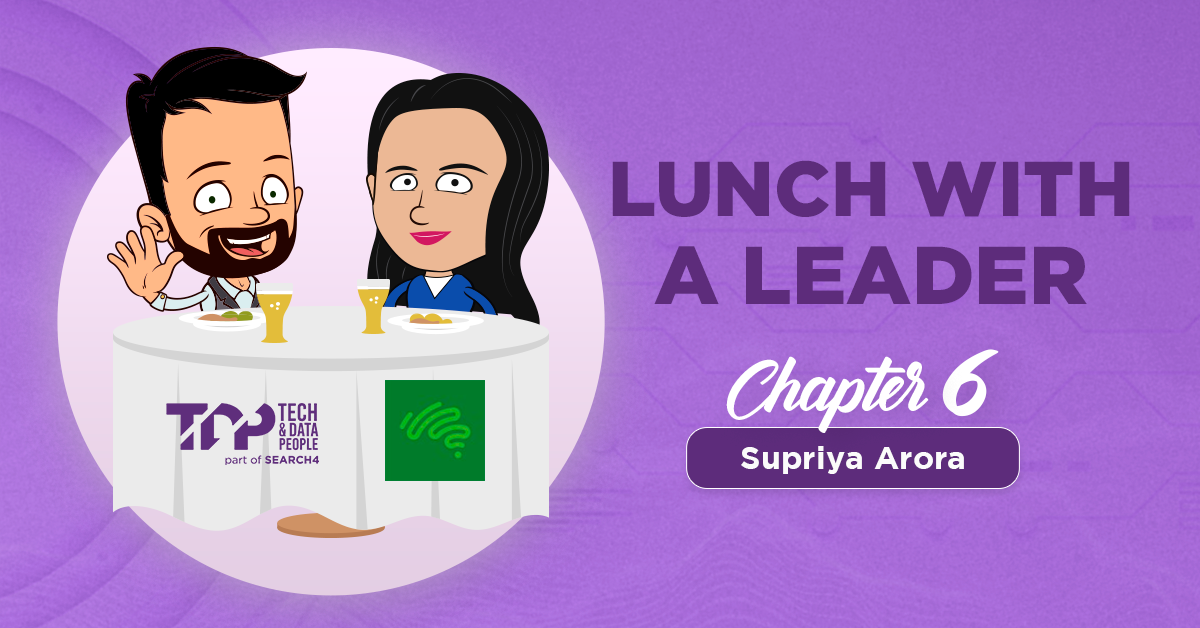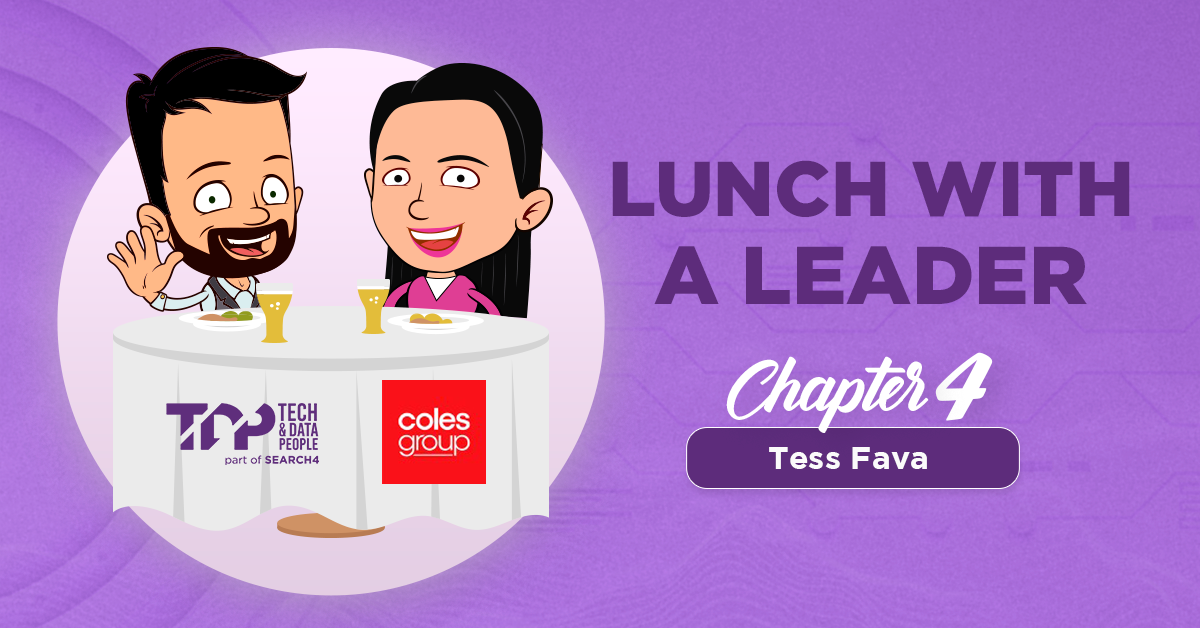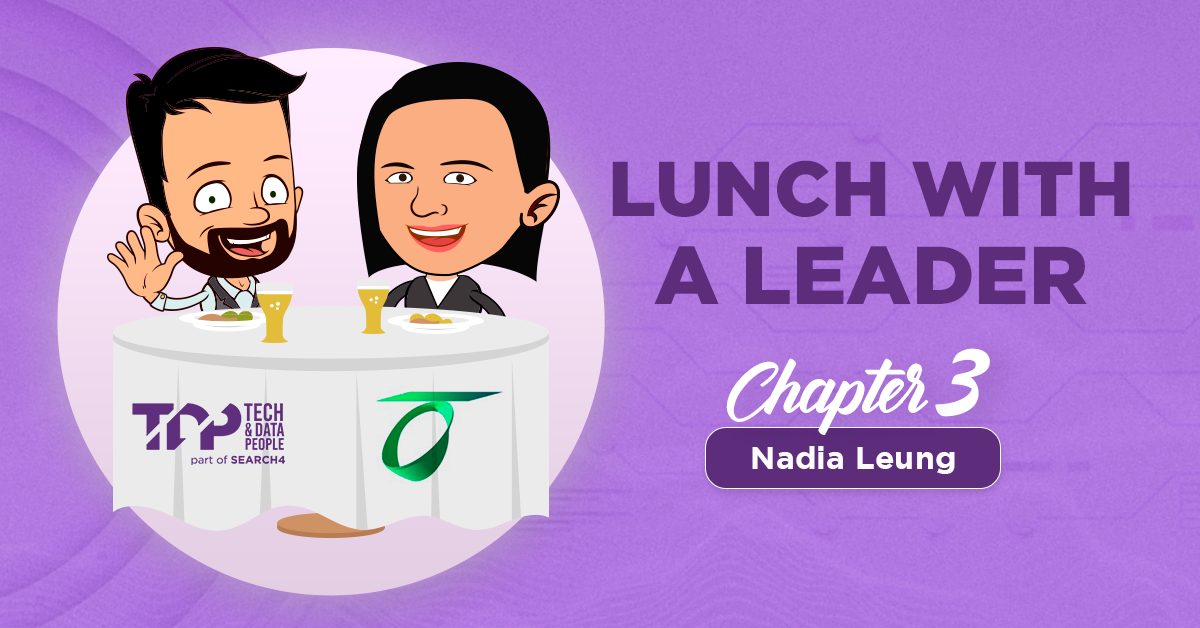Blogs
Lunch With a Leader: Chapter 5 – Purnima Fernando
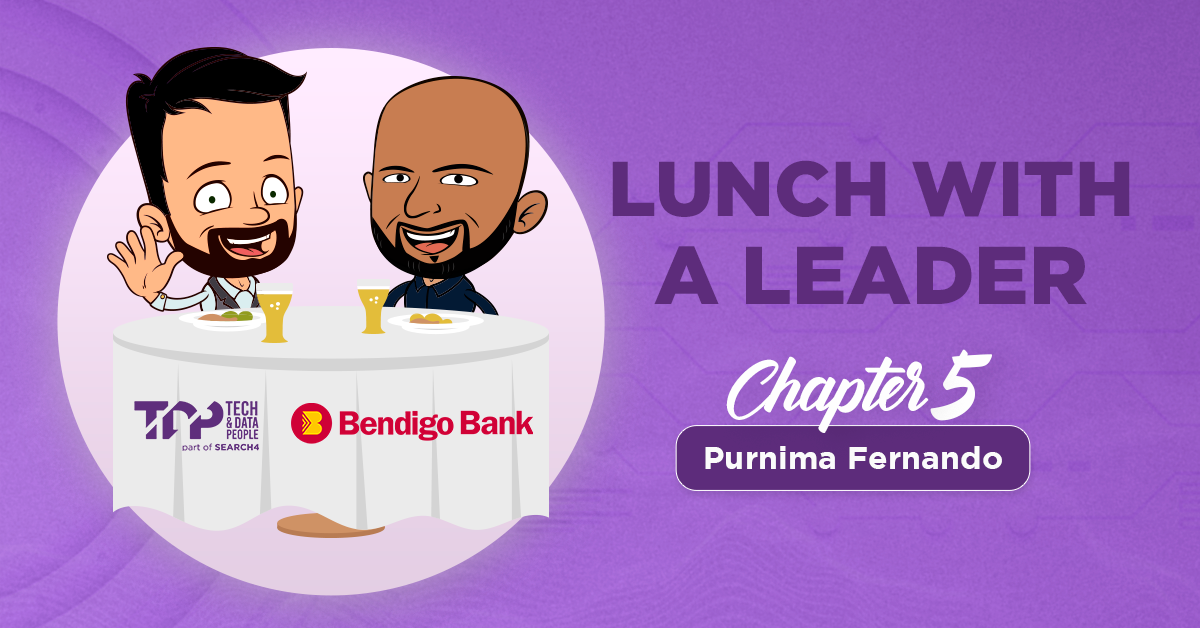
Welcome to Lunch with a Leader, where the Tech & Data People team sits down with IT leaders to uncover their career insights, challenges, and industry perspectives. Each conversation brings valuable lessons, trends, and advice to help our community grow and thrive.
Grab a seat at the table and take in the insights from some of the best in the business.
Project and program delivery may be built on process, but real leadership is built on people, pressure and perspective.
In this chapter, we sit down with Purnima Fernando – a Program Manager who brings hard-won lessons, sharp instincts, and deep resilience to the table. From navigating red-hot delivery environments at 25, to spearheading AI adoption in the enterprise, Purnima shares the pivotal moments and mindset shifts that have defined his career.
His reflections cut through the noise – on what it really means to lead, to shield your team, and to evolve alongside the tech that’s shaping the future of delivery.
Talking tech, teams & transformation
1. Looking back at your career journey, what's one seemingly small but pivotal decision or skill you developed that significantly contributed to your effectiveness as a Program Manager, particularly when navigating complex projects?
I’ve always been a bit of a control freak—which, oddly enough, made me a good project and program manager. I like to understand things deeply, stay organised, and keep everything on track. That part came naturally. But there were two key experiences that really shaped me.
The first was very early in my career. I was supposed to manage a small team, but things escalated quickly. The project ballooned into a 120-person onshore-offshore setup, and I was suddenly the lead offshore PM. It was my first real project management role. A true baptism by fire. Everything was blazing red from day one.
I learned a lot about what not to do. For instance, I discovered that the onshore PM had been altering my status reports—turning reds into greens—before presenting them to the client. I only found out after he resigned, when I stepped in as the sole PM and became customer-facing. The client thought everything was fine… and I was thinking, “What project are you talking about?!”
That experience taught me how to manage people, time, and customers under pressure. I was in my mid-twenties, with barely a year and a half of professional experience, working 14-hour days, six days a week. Looking back, I wouldn’t do that now but at the time, the experience was invaluable, and I didn’t know any better. I was surrounded by senior people pushing for deadlines and I did what I thought was necessary.
There was one time I worked 32 hours straight. I started at 8 AM, worked through the day, had calls with the U.S. team at night, stayed up until 4 AM updating the project plan, and then reviewed it with my bosses at 5 AM before the morning call. I finally went home around 6 PM the next day.
That kind of grind taught me resilience and opened doors I wouldn’t have had accessed otherwise.
The second pivotal influence was a former boss who was obsessed with detail. He would red-pen every document I submitted. Pointing out missing full stops, inconsistent formatting, everything. I hated it at the time but he told me, “If I fix it for you, you’ll never learn.” He was right.
He explained that when people see obvious mistakes, they start questioning the content underneath. Now, I apply that same level of scrutiny (especially in budgeting). On $20–40 million programs, I know where every dollar is. We aim for less than 0.5% variance between forecast and actuals, which is tough, especially in banking.
That attention to detail has become one of my greatest strengths and I expect the same from my team now. I’m grateful for that leader.
2. The technology landscape is constantly evolving. How do you personally stay ahead of emerging trends and ensure your program management methodologies remain effective and relevant in this dynamic environment?
For me, it’s less about staying on top of evolving program management methodologies and more about keeping up with the technology trends themselves.
Every organisation tailors its delivery approach to suit its needs. Whether it’s agile, hybrid, or something else, you learn to flex with the environment. When you’re lucky enough to influence or design a methodology yourself, that’s when you can really apply your learnings.
But staying current with technology? That’s the real challenge - and also a real opportunity. I listen to a lot of podcasts and subscribe to newsletters that focus on emerging tech. Right now, AI is moving at lightning speed and it’s tough to keep up if you’re not working in it day to day. I’m fortunate to have a few friends in that space who regularly give me the download on what’s happening, what’s hype and what’s worth digging into.
They’ll often point me to specific podcasts, videos, or articles that help me understand the landscape better. I’m not deeply technical, so having people who can break things down for me is invaluable.
One of the resources I follow closely is ARK Invest. Their newsletters are investment-focused, but grounded in where technology is heading. Whether it’s AI, enterprise tech, or robotics, they’re often ahead of the curve.
They believe we’re in the midst of a digital revolution – something as transformative as the industrial age – and I tend to agree.
3. Priorities can shift rapidly in tech. How do you effectively manage scope changes and ensure the team remains focused and motivated while adapting to new requirements? What strategies do you employ to communicate these changes effectively?
That’s a tough one. In my previous role, we had a clear, forward-looking strategy. The team was aligned, motivated and working toward a shared goal. When executive leadership changed, so did the strategy. For about six months, we were in a state of limbo. We knew priorities would shift, but we didn’t yet know how.
During that time, the leadership team and I made a conscious decision to buffer the team from the uncertainty. We let them continue working toward the original goals until we had clarity. Constantly zig-zagging with every new piece of information would have only distracted them. People need stability to stay productive.
That doesn’t mean withholding everything, but it does mean being thoughtful about what you share, when and how. If you tell a developer, “We might cut a million from the budget,” they’ll worry about layoffs. But three months later, you might get extra funding to accelerate delivery. So unless a change is definitive, I hold off on sharing it.
As a program manager, you have the privilege (and the burden) of seeing the full picture. Most team members are focused on their piece of the puzzle. They don’t need to be burdened with every fluctuation in budget or scope.
My job is to act as a heat shield – protecting the team from unnecessary noise so they can focus on delivering.
That said, it’s a fine balance. You don’t want to keep people in the dark either. It’s about psychological safety – making sure your team feels secure, supported, and informed enough to do their best work without being overwhelmed by uncertainty.
Ultimately, it comes down to knowing your audience. Some people want more transparency; others prefer to stay focused on the task at hand. As a leader, you have to read the room and adapt your communication accordingly.
4. Looking ahead, what are some of the biggest opportunities or challenges you see in the field of Technology Program Management, and how are you preparing yourself and your teams to navigate them?
For me, the biggest opportunity is AI. In my last role, I was actively pushing to enable AI tools across the team. But as with many organisations, the first response was “no” — too risky, too many concerns around IP, data privacy, and security. While those concerns are valid, the benefits of AI are too significant to ignore.
Take Amazon, for example — more than 50% of their code is now reportedly written by AI.
If we’re not on that train, we’re going to get left behind.
Even in program management, AI can streamline the painful, repetitive tasks. One of the best examples is meeting minutes. With the right tools, you can record a meeting, have it transcribed with 95–98% accuracy, and get a summary with action items. That used to be a dreaded task and now it’s nearly effortless. It’s not just about convenience – it’s about traceability and accountability, especially when you need to revisit decisions months later.
However, adoption isn’t automatic. In my current organisation, we’re still waiting for AI tools to be approved. Meanwhile, we’re being asked to deliver faster, with fewer resources. My response is: “Give me the tools, and I’ll give you the speed.”
At my last company, I spearheaded AI adoption within my team. Once the tools were available, I made sure we were ready. But even then, it wasn’t instant. Some team members were excited and jumped in. Others were too busy or unsure of the value. To address this, we had to run education sessions, monitor usage, and offer support. It wasn’t “You must use this,” but rather, “How can we help you use this?”
That’s where change management comes in. Not the traditional, organisation-wide kind, but a more hands-on, team-level approach. It’s about helping people adopt new tools in a way that feels safe, supported and valuable.
Personally, I stay current by using tools like ChatGPT, Grok, Perplexity, and others. I’ve shifted from Googling everything to using AI tools for research and synthesis. They help me stay ahead, and I encourage my teams to explore them too.
We’re at the start of a digital revolution. AI isn’t just a tool – it’s a shift in how we work. As program managers, we need to lead that shift, not follow it.
5. For individuals aspiring to become Program Managers, what are the top three pieces of advice you would offer them to develop the necessary skills and mindset for success in this demanding yet rewarding role?
This is a role that demands both technical know-how and strong people skills. Here are my top three pieces of advice:
Find a Great Mentor (or Several)
I’ve been lucky to work with some excellent program managers over the years, and I’ve learned that no one is great at everything but most are exceptional at something. One mentor I had was brilliant at summarising complex technical issues in a way that senior executives could easily understand. That’s a rare and valuable skill.
The key is to observe and learn from the strengths of those around you. If you want someone to mentor you, build a relationship first. Find common ground - whether it’s a shared interest or just mutual respect - so that when you ask for their time, it’s a two-way relationship, not just a request.
Master the Fundamentals - Especially Financials
You can’t be a great program manager without understanding how the engine runs. That means knowing how budgets work, how to track financials and how to do scenario planning. I’ve seen talented project managers fall short because they couldn’t manage the financial side.
Start by learning Excel inside and out. You’ll need it for forecasting, modelling “what-if” scenarios and answering tough questions from sponsors like, “What if we cut the timeline in half?” or “What if we only get 70% of the funding?”. Mistakes in this area can be costly.
Be a People Person - And a Shield for Your Team
Soft skills are just as important as technical ones. You need to understand what motivates each person on your team. Some people love public praise, others prefer quiet recognition. Learn what makes them tick.
Always have your team’s back. As a program manager, you’re the face of the program. When things go well, people thank you but it’s your job to redirect that praise to the team. When things go wrong, you take the hit.
If something goes wrong, take responsibility. If something goes right, give them the credit.
Also, learn how your stakeholders like to be communicated with. Some want to know about problems immediately. Others prefer to hear about them only once you have a solution. Tailoring your communication style to each stakeholder is a subtle but powerful skill.

State Lead, VIC
